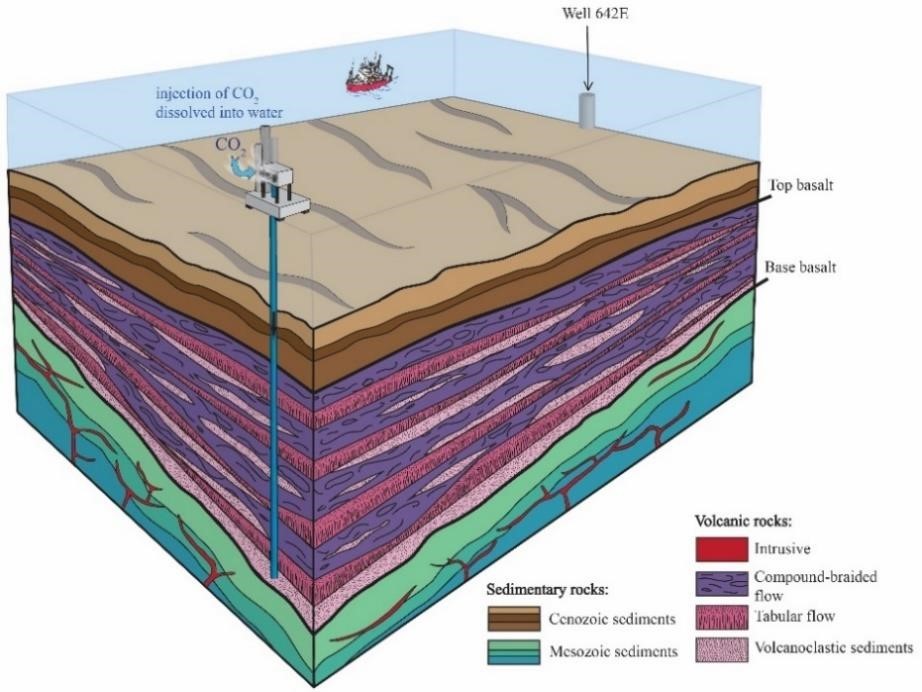In October 2021, The Faculty of Mathematics and Natural Sciences announced a call for sustainability projects at UiO. CO2Basalt was selected to get three of the 23 assigned early career positions. In 2022, we will enrol two PhD students and one post-doctorate fellow at the Njord Centre, who will work jointly on developing a better understanding of reactive fluid flow across scales in basalts.
Storing carbon in basalt comes with many benefits. The CO2 will quickly react with the divalent cations (Ca2+, Mg2+, and Fe2+) from dissolving minerals in the basalt and form carbonate minerals. In comparison, it might take several thousand years for significant amounts of CO2 to mineralize in a sandstone reservoir. Once mineralized, the carbon will be immobilized over geological timescales. Storing carbon in basalt also provides large reservoir volumes worldwide. Estimates suggest that mid-ocean ridges worldwide can store up to 100,000 Gt of CO2. This is more than 2000 times the annual global emissions of CO2, and the possibilities of carbon storage in volcanic sequences are therefore important to study further. The main goal of CO2Basalt is to evaluate the hypothesis that the multiscale flow pathways in basalts can host voluminous flows of carbon dioxide mixed with water that will react with the host rock to produce carbonate minerals.
CO2Basalt will be led by Professor François Renard and will involve an interdisciplinary group of researchers in geosciences, physics, and computational science. The project involves 1) physicists and geologists of the Njord Centre at the University of Oslo; 2) the company Volcanic Basin Petroleum Research AS (VBPR), which will provide seismic data and scientific and industry cores and borehole data from the Norwegian Sea; 3) the Norwegian national infrastructure “Goldschmidt Laboratory”, hosted by UiO, which will provide microscale porosity characterization with electron microscopy; and 4) the European Synchrotron Radiation Facility (ESRF) where we will perform dynamic microtomography experiments.
→ Read more about the sustainable development initiative
Project participants:
François Renard, Luca Menegon, Kristina Dunkel, Olivier Galland, Knut Jørgen Måløy, Marcel Moura, Henrik Andersen Sveinsson, Anders Malthe-Sørenssen, Sverre Planke (UiO and Volcanic Basin Petroleum Research AS), Sigurður Gíslason (University of Iceland), Oliver Plümper (Utrecht University), and Kim Senger (University Centre in Svalbard)
References:
Planke, S., et al. (2021). Permanent Carbon Sequestration Potential in Offshore Basalt Sequences on the NW European Continental Margins. In 82nd EAGE Annual Conference & Exhibition (v. 2021, 1, pp. 1-5). European Association of Geoscientists & Engineers.
